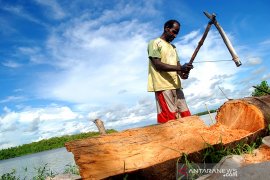Some 95 percent of sago in Papua grows naturally and is untapped."Kais, Papua (ANTARA News) - Sago can be a solution to make Indonesia self-sufficient in staple foods, an expert in biotechnology and agrotechnology Nadirman Haska stated.
"Sago does not require a large plot of land and is able to grow without any intensive care. Sago has a high carbohydrate content and is easy to digest," Haska noted here on Thursday.
It is not easy to make sago Indonesias staple food, he remarked.
In fact, sago is of better quality compared to rice as it is easy to digest.
"Indonesia can achieve food self-sufficiency if all the people in eastern Indonesia consume sago," said Haska, who has been involved in sago research for several years.
"It is not necessary to send rice for the poor (Raskin) in eastern Indonesia due to high cost. It is better to use the fund to develop sago," he emphasized.
According to data, Papua has 1.2 million hectares of sago plantations.
"Some 95 percent of sago in Papua grows naturally and is untapped. Only five percent has been exploited," he remarked.
He pointed out that Papua province has the potential of producing nearly eight million tons of wild sago (grown without being treated by farmers), which is not used as a staple food or flour.
Haska stated that wild sago is of good quality and can be processed into a variety of food products with high carbohydrate content.
He has cooperated with the state-owned forestry company Perum Perhutani to build a modern sago processing plant in Kais, Papua Province.
"The plant is estimated to produce 100 tons of sago flour each day," Haska added.
(Uu.A063/INE/KR-BSR/F001)
Editor: Priyambodo RH
Copyright © ANTARA 2015











